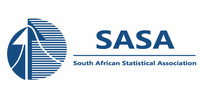Speaker
Erik Schlögl is Professor and Director of the Quantitative Finance Research Centre at the University of Technology, Sydney (UTS), Australia. Erik received his doctorate in Economics from the University of Bonn, Germany, for work on term structure models and the pricing of fixed income derivatives and has gained broad-based experience in computational financial engineering. He has consulted for government and financial institutions and software developers in Europe, Australia and in the US, and served as an expert witness in cases before the Federal Court of Australia. His research interests cover a broad area of quantitative finance, in particular model calibration, interest rate term structure modelling, credit risk and the integration of multiple sources of risk. His research articles have been published in a number of international journals, including Finance and Stochastics, Quantitative Finance, Risk and the Journal of Economic Dynamics and Control. He is also the chairman of the organising committee of the Sydney Financial Mathematics Workshop (SFMW) and one of the co-organisers of the annual conference Quantitative Methods in Finance (QMF). In addition to UTS, he held positions at the University of New South Wales, Australia, and the University of Bonn, Germany.



